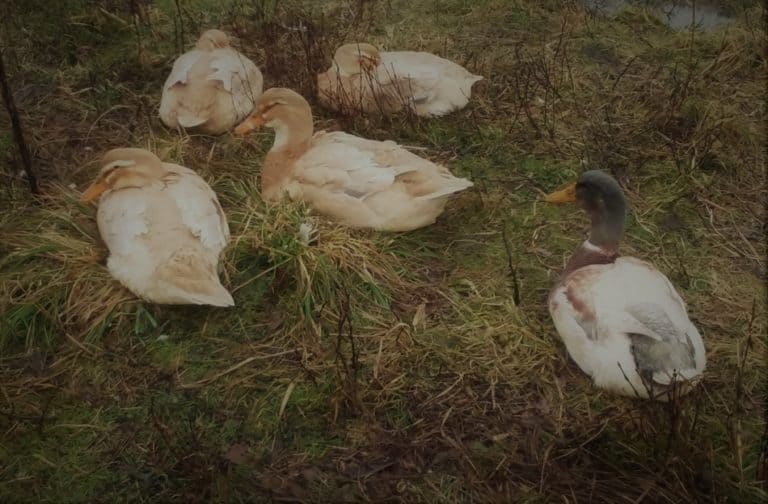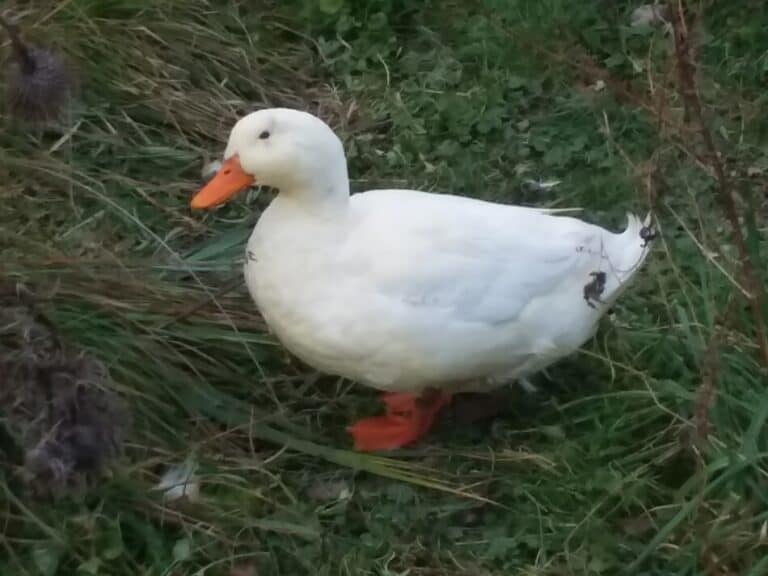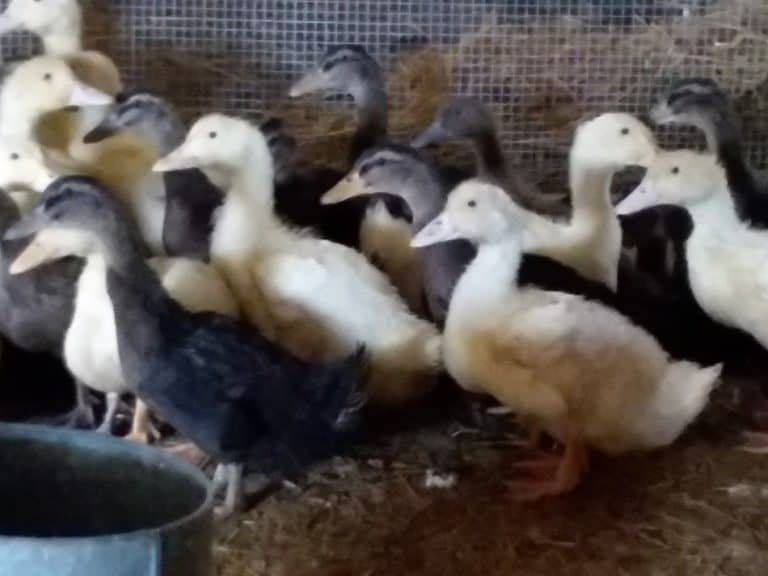What Is The Best Bedding To Use For Ducklings?
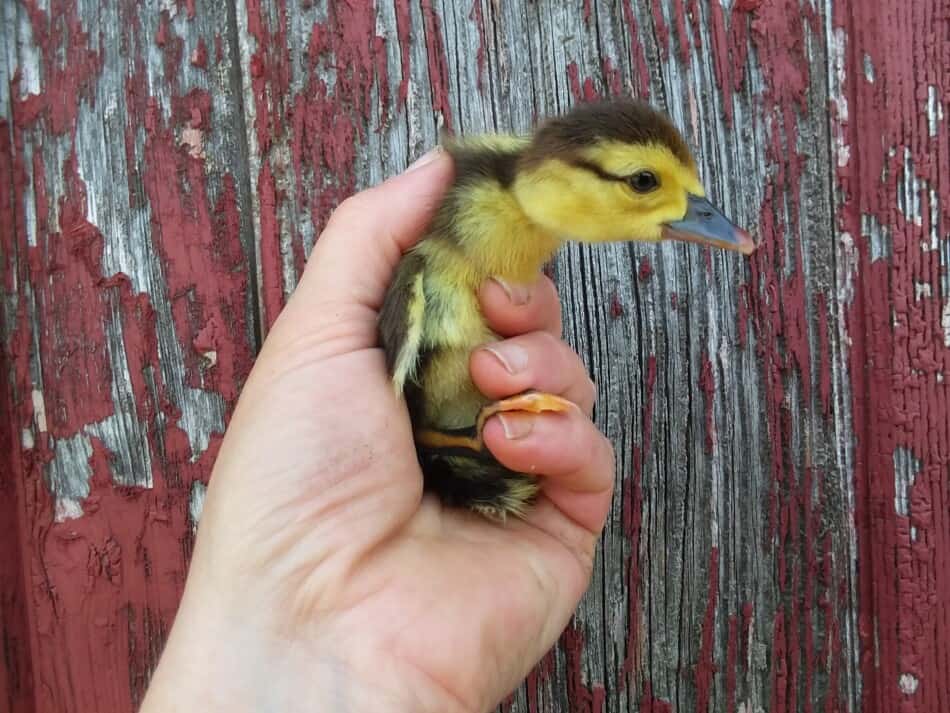
You’ve decided this is the year, you’re getting some ducklings! It’s time to get that brooder set up so you are ready when the ducklings arrive.
Once you have a place in mind for the brooder, that will work well for you and the ducklings, what bedding are you planning to use to keep the ducklings warm and comfortable?
The best bedding to use for ducklings is straw. Straw is easy to find, inexpensive, easy to work with, absorbent and keeps the ducklings comfortable.
How Much Feed Do Ducklings Need? is an article I wrote to help new duck owners know what they need to keep on hand for their fast growing ducklings!
Use straw as bedding for the ducklings
The best bedding to use for ducklings is straw. It’s pretty easy to find, works well and gives you a nice manure rich pack of compostable material when you are done raising your ducks.
When spreading out the straw, do your best to shake it out into an even layer. Multiple thin layers will lay flat when compared to a thicker layer that was spread all at once.
Once you get the straw spread out in your brooder area, be sure to stomp it down if it looks fluffed up enough that the ducklings will have trouble walking around.
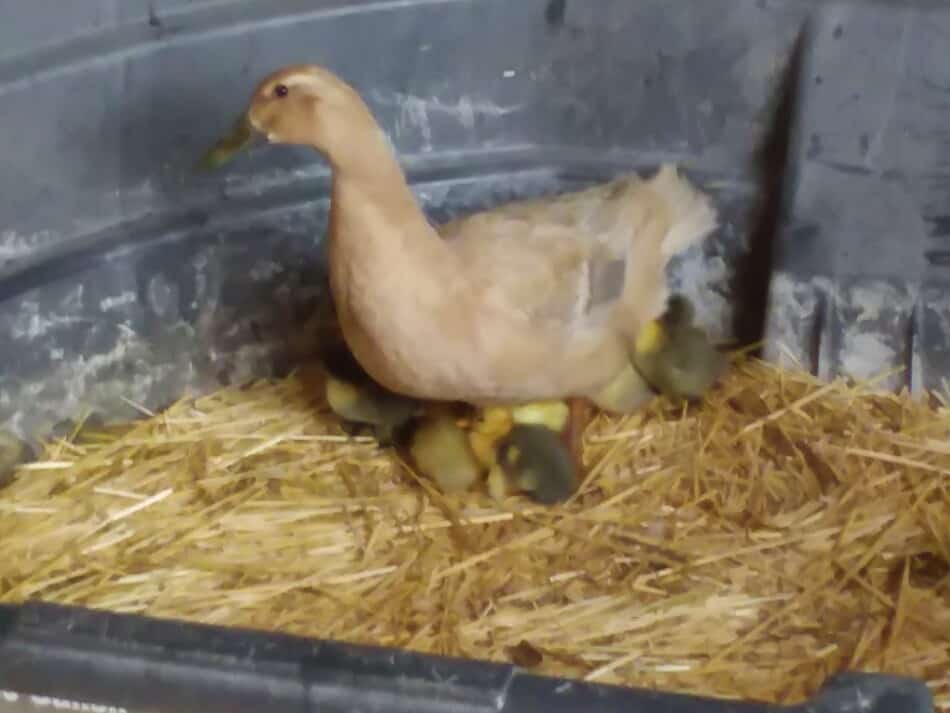
If available, get chopped straw for your ducklings
Get chopped straw if you can. Not all areas have chopped straw available, but get it if you have the option. Chopped straw is cut into short pieces before baling, rather than kept as longer stems in regular straw.
Chopped straw is super easy to spread around, just open the bale and rake it around a bit to fill in the corners.
The type of straw does not matter
Straw can come from any of the small grains, wheat, barley, rye and oats are the most common. Straw from any of these small grains will work just fine. You don’t have to be picky as long as the bales you get look nice.
We use the straw that is most commonly found in our area, since it will be the easiest to find and, most likely, the least expensive to buy.
Less shiny straw absorbs better in the duck brooder
If you can find it, buy the least shiny straw. I know the bright yellow straw looks super and it’s the one that will make the brooder look the brightest, but it’s also the one that takes longer to absorb wetness.
The less shiny or dingy looking straw was most likely rained on then left in the field to dry out again before it was baled. Getting rained on makes the straw less shiny, but we find that the less shiny straw works better as bedding.
To be clear, I’m not saying moldy, just that you don’t need the bright, shiny stalks to have a good bedding material.
Duck hen and her ducklings need plenty of straw, food and water
This duck hen (pictured above) and her babies are in a big water trough for a week or so until the babies get a little more agile and able to keep up with her, she’s a fast walker!
Since the mom is in the trough, I don’t need a heat lamp. They still have plenty of bedding, a feeder and a waterer, just like ducklings that are not being raised by their mom.
With the hen in the trough, this group will use more water than they would if it was just the ducklings, but then I would need the heat lamp, as well.
You have other options for duckling bedding materials
Some years the price of straw is high, usually when the harvest conditions were poor, so few if any of the local farmers decided to bale any. When the price of straw is sky high, what are your other options?
Depending upon your area, you may have more economical bedding options available to you, aside from straw. Here’s a few that should work for you and your ducklings, as well.
You can use old hay as duckling bedding
Older, mulch type hay can be very affordable and will work great as a bedding material. Actually, we find that hay absorbs wetness better than shiny straw.
The only catch with using old hay is to make sure it is mold and dust free before spreading it out in your ducklings’ brooder. You don’t want those babies breathing in dusty or moldy air.
Pine shavings would work as duckling bedding
The bagged pine shavings that are commonly available at your local farm store will work as duck bedding, as well. The great part about shavings is that they always spread out and clean out well.
Plus, pine shavings seem to have a more steady price than straw. In certain times of the year, usually late winter, the cost of straw can go up substantially, while shavings price stays pretty constant.
Be sure you get pine shavings and not cedar! Pine shavings should be much more affordable and in a big stack so you’re sure to see them, but double check the bag to be sure.
Extra mulch or finer wood chips could be used as duck bedding
If you have an extra few yards of uncolored and untreated mulch or some finer cut wood chips, those could be great for duckling bedding. Double check on the untreated part!
I have to admit, I wouldn’t go buy these to use in the brooder, since they are not likely to be an economical alternative to straw. But, I definitely would use them instead of straw if I had the mulch or the wood chips already at my house.
Don’t use paper as bedding for your ducklings
I haven’t heard much about it lately, but once in a while the “use shredded newspapers for bedding” idea comes up. It does not work well.
The paper looks good when you first put it in the pen, but the smallest amount of wetness and it seemingly melts into nothing.
I know there are paper based bedding options for caged small animals, like rabbits, that I have heard good things about as far as absorbency and being easy to use.
However, this type of bedding is really expensive for the area covered and I have not used it to give you a “is this bedding material worth it” comparison. The cost alone would have me using something else.
Add more bedding as needed by the ducklings
Part of raising ducklings is knowing that they love messing with water. It’s what they do. Read How Much Water Do Ducklings Need? if you want the amount of water needed as your ducklings age.
Add bedding to your duckling pen, as needed. This is probably a daily thing to keep the brooder nice and dry for the day.
Keep waterers easy to find when ducklings are new
If you have the waterers in an area of the brooder that is separate from the heated area, you’ll be better able to keep the bedding nice and dry.
To be clear, start with the waterers and the feeders in a very easy to reach location for the new ducklings. Alternating feeders and waterers around the heat lamp circle is a great idea for day old ducklings to find them easily.
Once the ducklings are finding the waterers easily, now you can gradually start moving the waterers out to an area further from the heat that is easier to access with extra bedding.
The area around the waterer will get messy first
I’m sure it won’t be much of a surprise to know that you should pay close attention to the bedding areas around the waterers, since those are the spots that will need the bedding replaced first.
You can dig out the wet areas with a pitchfork or just keep adding bedding and plan one big clean out when the ducklings are grown and out of the brooder.
I usually go with the add bedding as I go plan and have one big clean out at the end. This way I don’t upset the ducklings while they are young enough to still be in the brooder.
If you feel you need to clean out the brooder area around the waterers before the ducklings are out of the brooder, pick a nice day where they can go to another pen, maybe even in a small pen outside that is attached to the brooder.
Let the ducklings hang out in another spot until you get the brooder tidied up. Be sure the ducklings are calm and at the right temperature, not too hot or too cold, where ever you end up putting them while you work.
Cleaning out the pen with the ducklings in it will stress out the ducklings, don’t do it. They’ll be trampling over each other to try to get away.
Honestly, all this wouldn’t be worth the effort to me. I’d rather add more bedding for now and wait until I can clean out the brooder once.
If you are not familiar with it, Metzer Farms is a great site to check out for questions regarding ducks and geese. Click around on the blog articles, there’s a ton of great, practical and easy to understand information.


